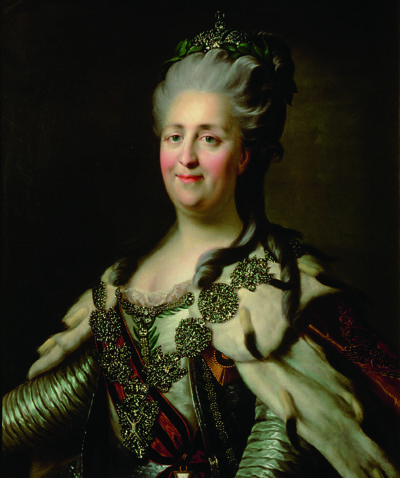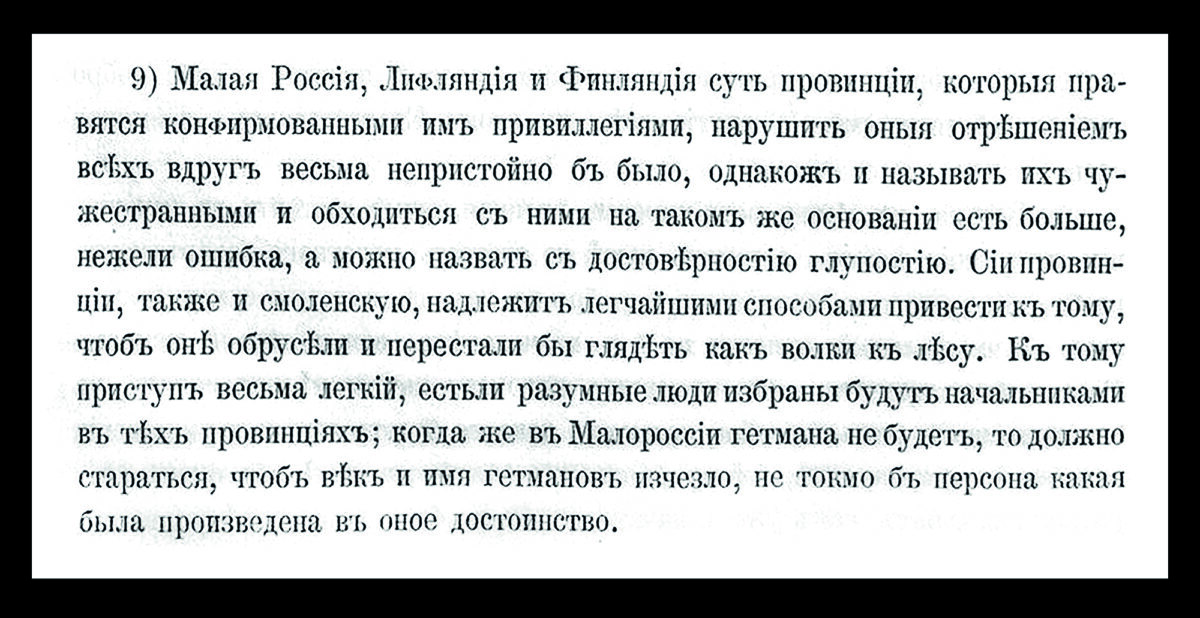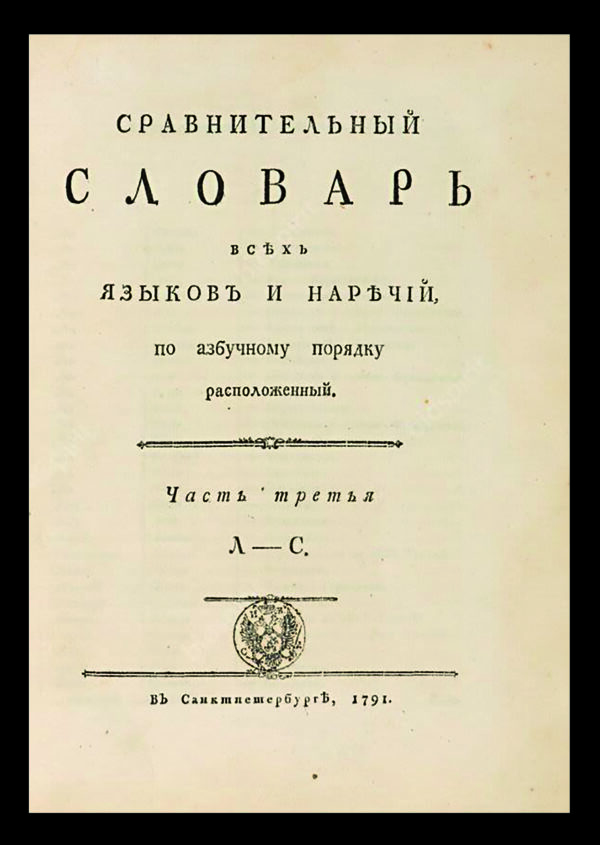The First was he who crucified
Unfortunate Ukraine,
The Second — she who finished off
Whatever yet remained
Taras Shevchenko, “A Dream” (translator’s note: Translated from Ukrainian into English by John Weir)
Ekaterina II completed the destruction of Ukraine’s autonomy and the Cossacks in less than twenty years.
First, in 1762-1763, the autonomy of the five Sloboda Cossack regiments was annulled. Since 1651, the Cossacks had inhabited the Sloboda region, which included the modern territories of Kharkiv, Sumy, Poltava, Luhansk, Donetsk, Voronezh, Kursk, and Bilgorod regions.
In 1764, Ekaterina II abolished the institution of the Hetmanate.
(“so that the name of the Hetman may disappear…” – from the instructions regarding the Cossack elders’ attempts to elect a new Hetman).
A year later, instead of the autonomous Hetmanate, a Russian province Little Russia (Malorussia) appeared, which, according to the “Secret Instruction” to Vyazemsky, “must…bring them to Russification…”
In 1775, after secret preparations, Ekaterina II sent an expedition of 50 thousand people under General Peter Tekeli to eradicate the Zaporizhian Sich.
Weakened by the absence of most of the Cossacks, who were recruited by the authorities for the war with the Ottoman Empire, and by epidemics, completely surrounded by the tsarist army, which had already captured artillery and blocked the harbor, the Sich was forced to surrender to avoid a repeat of the genocide of 1709 in Baturyn.
After the capture of the Sich, Ekaterina II issued a manifesto on the destruction of the Sich and the Zaporizhian Cossacks, in which it was stated that the very existence of these names was an insult to the Russian authorities.
In the manifesto, the Cossacks, who had only recently been used as skilled soldiers in the war with Turkey, were characterized as a shameful gang of drunkards and a threat to neighboring states.
On June 10, 1776, the last Koshovoy Ataman, Petro Kalnyshevsky, was exiled to the Solovetsky Monastery, the military judge Pavel Golovaty to Tobolsk, and the military clerk Ivan Globa to Turukhansk, where they remained until their death.
The final destruction of Ukrainian autonomy ended with the abolition of the regimental administrative structure in 1781, and the Cossack army in 1783.
In May 1783, Ekaterina II introduced serfdom in the territories that previously belonged to the Hetmanate and Slobozhansk regions.
In fact, the Cossacks and relatively free peasantry were turned into slaves who could be sold and separated from their families.
The scale of the enslavement of Ukrainians was horrific. At first, 300,000 people, and later, 23,400 were added annually.
A one-year-old child could be purchased for 10 kopecks, a thirteen-year-old girl for 4 rubles (while a purebred puppy cost several thousand).
The treatment of serfs was commensurate with the price. They were mercilessly beaten, and could be locked up overnight in unheated rooms.
“By the end of Ekaterina’s reign, retail sales of people had taken on a completely disgusting appearance. People were sold at the same level as cattle. Moreover, the greatest demand was for beautiful girls”.
Another consequence of the final destruction of Ukraine’s autonomy was conscription.
A huge number of men from 17 to 35 years old were recruited into the Russian army (during the Crimean War, 70 per thousand of the population).
Until 1793, it was for life, later for 25 years. In the 19th century, the term of service was gradually reduced to 20, 13, and 7 years. Ukrainian men lost their best years and health in the imperial army and died en masse during the wars waged by Russia.
At the same time, Ekaterina II carried out the total Russification of Ukraine and numerous measures that contributed to this.
■ 1766. The Synod issues a decree on the censorship of the Ukrainian press.
■ 1769. All Ukrainian books in churches are replaced with Moscow ones, and Ukrainian abc-book are confiscated everywhere.
■ 1780. An “accidental” fire destroys the library of the Kyiv-Mohyla Academy, which stored publications from the times of Kyivan Rus`.
■ 1783. Teaching in Russian was introduced at the Kyiv-Mohyla Academy.
■ 1789. At the request of Ekaterina, a “Comparative Dictionary of Different Languages and Dialects” was published. In it, the Ukrainian language is called “Russian, which was distorted by Polish.”
■ 1786. Ekaterina II issued a decree confiscating church property for the benefit of the state and transferring monks to pay salaries from the treasury.
This finally destroyed the independence of Ukrainian monasteries, which they had enjoyed for centuries.



